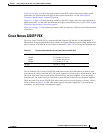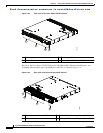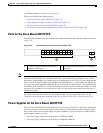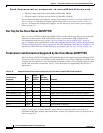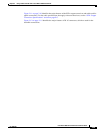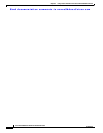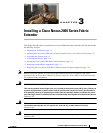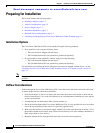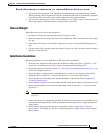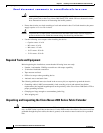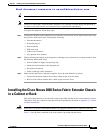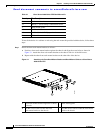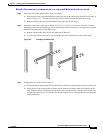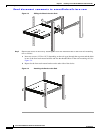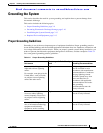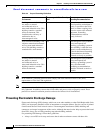
Send document comments to nexus5kdocs@cisco.com
3-3
Cisco Nexus 2000 Series Hardware Installation Guide
OL-19013-05
Chapter 3 Installing a Cisco Nexus 2000 Series Fabric Extender
Preparing for Installation
• Consider the heat dissipation of all equipment when determining air-conditioning requirements.
When evaluating airflow requirements, take into consideration that hot air generated by equipment
at the bottom of the rack can be drawn in the intake ports of the equipment above.
• If you mount a chimney type of rack, avoid mounting it in a way that is contrary to the direction of
flow in the chimney, where the chimney overpowers the system fans.
Chassis Weight
When lifting the system, follow these guidelines:
• Disconnect all power and external cables before lifting the system.
• Have two people lift the system. The Cisco Nexus 2000 Series FEXs can weigh up to 18.5 pounds
(8.4 kg).
• Ensure that your footing is solid and the weight of the system is evenly distributed between your
feet.
• Lift the system slowly, keeping your back straight. Lift with your legs, not with your back. Bend at
the knees, not at the waist.
Installation Guidelines
When installing the Cisco Nexus 2000 Series FEX, follow these guidelines:
• Plan your site configuration and prepare the site before installing the chassis. Appendix G, “Site
Preparation and Maintenance Records,” lists the recommended site planning tasks.
• Record the information listed in Appendix G, “Site Preparation and Maintenance Records,” as you
install and configure the device.
• Ensure that there is adequate space around the device to allow for servicing the device and for
adequate airflow (Appendix B, “Technical Specifications,” lists airflow requirements).
• Ensure that the air-conditioning meets the heat dissipation requirements listed in Appendix B,
“Technical Specifications.”
• Ensure that the air intake is not located where the FEX would take in exhaust air from other systems.
• Ensure that the cabinet or rack meets the requirements listed in Appendix A, “Cabinet and Rack
Installation.”
Note Jumper power cords are available for use in a cabinet. See the “Jumper Power Cord” section on
page C-8.
• Ensure that the chassis is adequately grounded. If the device is not mounted in a grounded rack, we
recommend connecting both the system ground on the chassis and the power supply ground to an
earth ground.
• Ensure that the site power meets the power requirements listed in Appendix B, “Technical
Specifications.” If available, you can use an uninterrupted power supply (UPS) to protect against
power failures.



